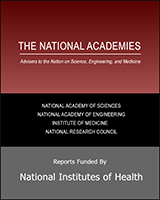
NCBI Bookshelf. A service of the National Library of Medicine, National Institutes of Health.

National Research Council (US) Committee for the Update of the Guide for the Care and Use of Laboratory Animals .
Washington (DC): National Academies Press (US) ; 2011 . ISBN-13: 978-0-309-15400-0 ISBN-10: 0-309-15400-6 Copyright © 2011, National Academy of Sciences. For more information, see the Bookshelf Copyright Notice.The purpose of the Guide for the Care and Use of Laboratory Animals (the Guide), as expressed in the charge to the Committee for the Update of the Guide, is to assist institutions in caring for and using animals in ways judged to be scientifically, technically, and humanely appropriate. The Guide is also intended to assist investigators in fulfilling their obligation to plan and conduct animal experiments in accord with the highest scientific, humane, and ethical principles. Recommendations in the Guide are based on published data, scientific principles, expert opinion, and experience with methods and practices that have proved to be consistent with both high-quality research and humane animal care and use. These recommendations should be used as a foundation for the development of a comprehensive animal care and use program, recognizing that the concept and application of performance standards, in accordance with goals, outcomes, and considerations defined in the Guide, is essential to this process.
This study was supported by the Office of Extramural Research, Office of the Director, National Institutes of Health/Department of Health and Human Services under Contract Number N01-OD-4-2139 Task Order #188; the Office of Research Integrity, Department of Health and Human Services; the Animal and Plant Health Inspection Service, U.S. Department of Agriculture; Association for Assessment and Accreditation of Laboratory Animal Care International; American Association for Laboratory Animal Science; Abbott Fund; Pfizer; American College of Laboratory Animal Medicine; American Society of Laboratory Animal Practitioners; Association of Primate Veternarians.
Any opinions, findings, conclusions, or recommendations expressed in this publication are those of the authors and do not necessarily reflect the views of the organizations or agencies that provided support for the project. The content of this publication does not necessarily reflect the views or policies of the National Institutes of Health, nor does mention of trade names, commercial products, or organizations imply endorsement by the US government.
NOTICE: The project that is the subject of this report was approved by the Governing Board of the National Research Council, whose members are drawn from the councils of the National Academy of Sciences, the National Academy of Engineering, and the Institute of Medicine. The members of the Committee responsible for the report were chosen for their special competences and with regard for appropriate balance.